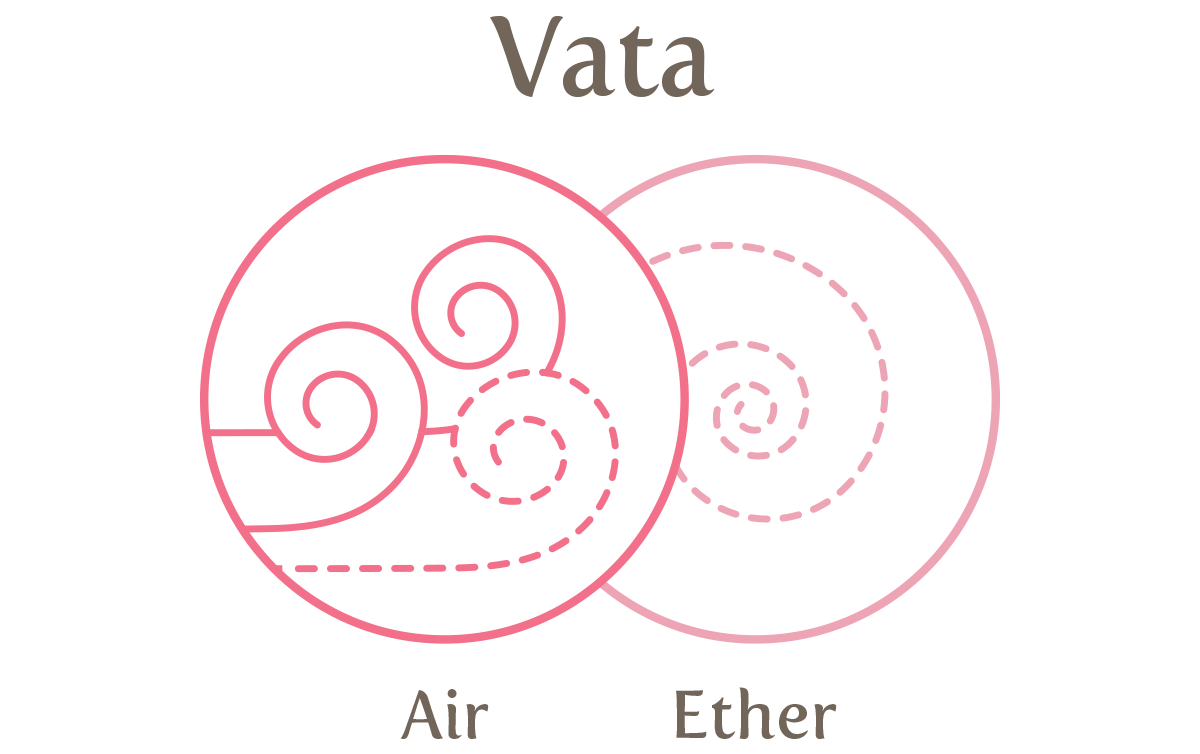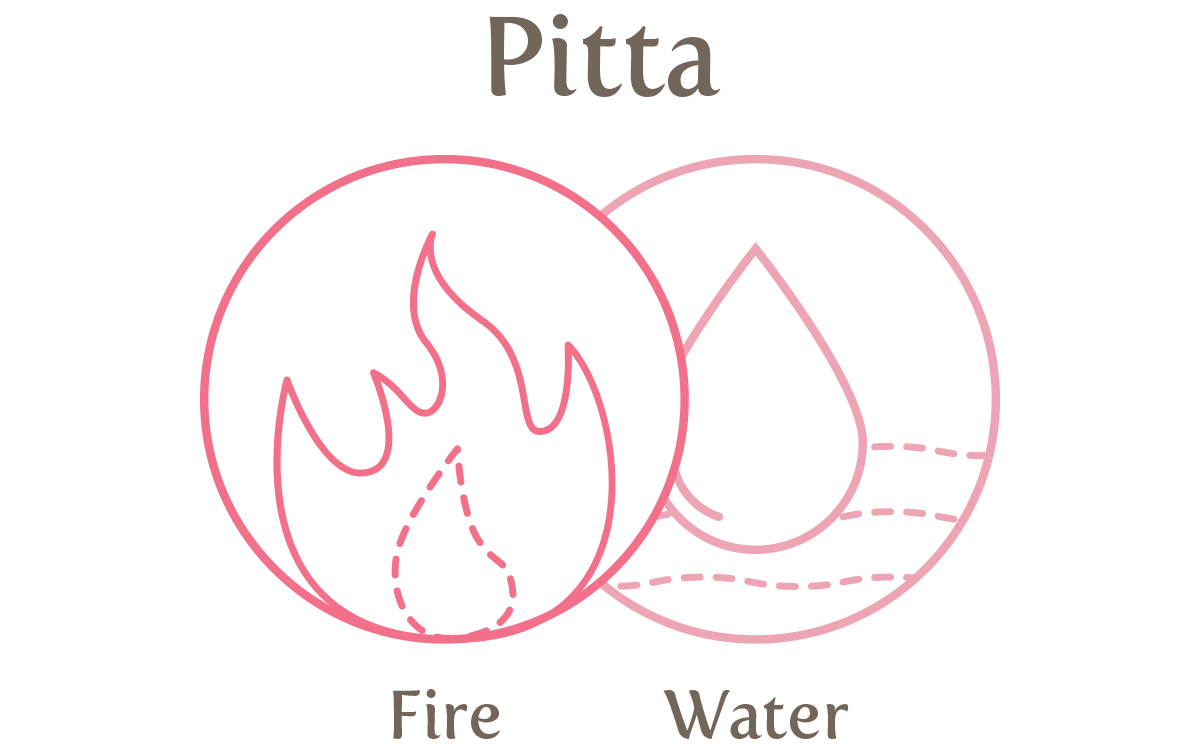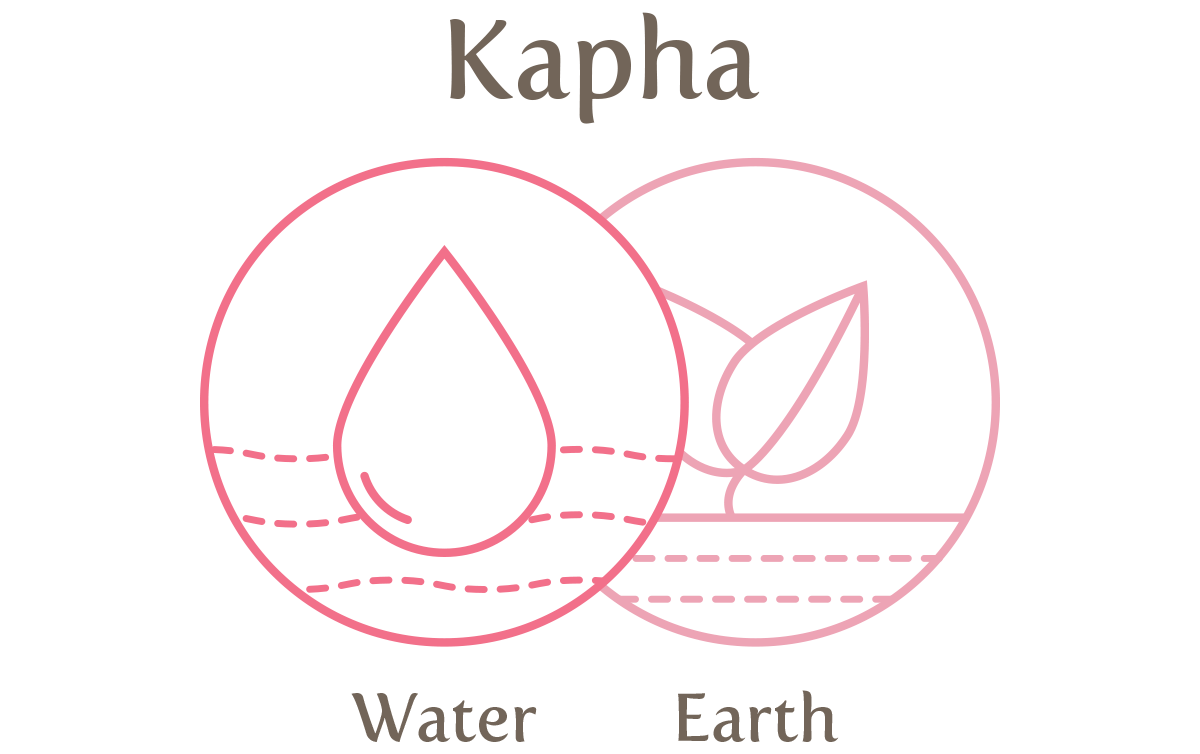About Ayurveda
The fundamental healing principles of Ayurveda

Representing space and air, Vata is associated with movement, including circulation, respiration, and nerve impulses.

Comprising fire and water, Pitta governs metabolism, digestion,
and energy production.

Made up of earth and water, Kapha is the principle of cohesion and structure, governing the body's physical form and fluid balance.
Our mission is to offer authentic Ayurvedic consultations and treatments, tailored to meet the unique needs of each individual, using traditional Ayurvedic herbs, oils and therapies, combined with modern diagnostic tools and techniques.
We strive to provide a nurturing and supportive environment for our clients, where they can experience the benefits of Ayurveda in a safe and comfortable setting.
We are committed to educating and empowering our clients to take charge of their own health and well-being through our Ayurvedic academy, which offers courses and workshops on Ayurvedic principles, nutrition, lifestyle and self-care practices.
We aim to share the knowledge and wisdom of Ayurveda with the wider community, promoting health and harmony on all levels – physical, mental, emotional and spiritual. Evolution of Ayurveda in Australia and beyond.
We believe in the importance of preserving and honouring the ancient wisdom of Ayurveda, while also embracing the advancements of modern science and technology. Our approach is holistic and integrative, combining the best of both worlds to provide a comprehensive and effective healing experience.
We are dedicated to serving our community with integrity, compassion, and excellence, and to promoting the growth and evolution of Ayurveda in Australia and beyond.
Ayurveda, the Science of Life
Ayurveda is a comprehensive system of healthcare originating in India over five thousand years ago. The fundamental healing principles of Ayurveda are found in the various sacred texts of ancient India such as the Rigveda and the Atharva Veda.
Ayurveda is derived from two Sanskrit words: ‘Ayur’ meaning life and ‘Veda’ which means knowledge. Original classical Ayurvedic texts like Charaka Samhita (CS) and Sushruta Samhita (SS) were documented over a thousand years B.C.
Ayurveda, the science of life, is concerned with the maintenance of health, enhancing the quality of life, the prevention of ill health as well as the treatment of disease. Unlike other systems of medicine which provide only symptomatic treatment, Ayurveda lays emphasis on treating the underlying cause of illness. It is a holistic science, taking into account all aspects of one’s life such as physical and mental constitution, lifestyle, and imbalances of an individual. The ancient teachings of Ayurveda provide a vast guide of practical advice and wisdom on almost every imaginable aspect of one’s life and the approach to health.
Background and Philosophy
Ayurveda is firmly embedded in Indian philosophy and has evolved according to the five basic elements that comprise the universe, the panchamahabhutas. These include:
[1] Space/ether [2] Air [3] Fire [4] Water [5] Earth
These elements are present in all things and in the human body they manifest as ‘doshas’. A person is said to have a particular dosha depending on the proportion of the 5 elements in their body.
‘An individual is an epitome of the universe as all the material and spiritual phenomena of the universe are present in the individual and all those present in the individual http://healthlibr.com are also contained in the universe.’
Charaka Samhita. Sha 5/3
Each of us is born with an individual constitution called the Prakriti. Our Prakriti is determined by environmental factors as well as the state of our parents doshas at the time of conception. The three doshas are known by their Sanskrit names of Vata, Pitta and Kapha. Everyone’s constitution is governed by all three doshas in varying degrees.
The Doshas

Vata Type
Predominant in space and air
Vatas are often thin with narrow bones, have dry skin and have a tendency to feel cold. They are uncomfortable in cold weather, especially if it is dry and windy. They also talk and walk fast and are always in a rush.
Vata type persons have quick and creative minds but they are also worriers and are prone to anxiety, disease of the large intestine, the immune system, nervous system, joints, constipation, colitis, arthritis, irregular periods and chronic fatigue syndrome.
General guidelines for balancing Vata are to keep warm, calm, avoid raw foods, cold foods, extremely cold temperatures, and are encouraged to eat warm food and spices as well as keep a regular routine.

Pitta Type
Predominant in fire and water
Pittas are often fair and freckled. They are intolerant to heat, are prone to having excessive heat in the face, and sweat easily. Pittas have a tendency to have moles and pimples. They have excessive hunger and thirst, can develop wrinkles early in life, and experience premature greying of the hair and hair loss. Pitta individuals have a sharp intellect. Out of balance they become easily agitated, argumentative, and short tempered. Pittas are prone to burning sensations of the skin, fevers, sore throats, inflammatory disease, disease of the small intestine, jaundice, hepatitis, skin rashes, hyper acidity, reflux, thyroid problems, eye disease, burning of the eyes and blood disorder.
General guidelines for balancing Pitta are to avoid excessive heat, limit salt intake, eat cooling, non spicy foods, drink cool drinks (not iced), and exercise during the cooler part of the day.

Kapha Type
Predominant in earth and water
Kaphas may be oily-skinned, have thick wavy hair, and a solid build. They are blessed with strength, endurance and stamina. They are calm, tolerant and forgiving. They can comfortably skip meals and work for long periods without food. They may be slower to learn but have an excellent long term memory, unlike Vata types who are prone to forgetfulness. Kaphas have a sweet tooth, their metabolism is slow and they are prone to weight gain, water retention, mucus, bronchial congestion, asthma, diabetes, depression, and diseases of the lungs, stomach, and pancreas.
General guidelines for balancing Kapha are to get plenty of exercise, avoid heavy foods, dairy products, iced food and drink, fatty or oily foods. Eat light and dry food.
Mental Constitution – Mana Guna
Not only are there three main constitutional types of the body, the Tridosha, (Vata, Pitta, Kapha) but the mind also has its own constitution. The mind can be either sattvic, rajasic or tamasic or a combination of all three.
- Sattvic (knowledge, purity) people are kind, truthful, calm, gentle and spiritual
- Rajasic (action, passion) people are passionate, value power, materialistic, ambitious and grasping
- Tamasic (inertia, ignorance) people are more lazy, ignorant, lethargic, dishonest and easily deluded
Pathogenic factors in the body are Vayu, Pitta and Kapha while those in the mind are rajas and tamas.
Ch. Su 1:57
Ayurveda prescribes different regimes to balance the doshas. The doshas need to be in a state of equilibrium for the body and mind to remain in a state of sound health.
Ayurvedic perspective on health, disease and treatment
“Health is the condition of wisdom and the signs of happiness”
Charaka Samhita
The western concept of medicine is predominantly focused on treating the symptoms of disease. In contrast, Ayurveda attempts to identify the root problem and aims to eliminate the cause of imbalance. Eliminating the imbalance of doshas by elimination therapies help in the prevention of their recurrence. The doshas can be compared to a tree. Unless the tree is uprooted from its root, it will grow in spite of its branches etc being chopped off.
In Ayurveda, it is thought that disease is the effect of disequilibrium of the doshas while health is the result of their equilibrium. Ayurvedic philosophy gives us three key causes of imbalance leading to disease. They are:
- Unsuitable use of the senses (e.g. exposure to too much sunlight, or artificial light)
- Actions / making the wrong decision (e.g. wrong diet)
- Effects of time (eg: ageing, seasonal change)
The aim of Ayurveda is to prevent disease though a disciplined daily or seasonal routine, immunity boosting herbal formulations, massage and other detoxification procedures according to individual needs.



